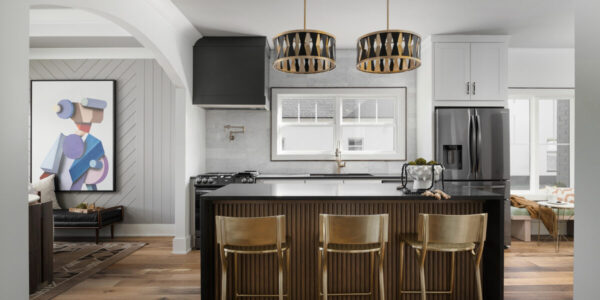
Will San Francisco’s Car Ban End Traffic in the West?
Big fines for Market Street drivers are only the beginning. Throughout the region, new efforts are under way to unblock roads and highways. Do any of them have a chance?

Kris Wong, www.kriswong.com / Getty Images
San Francisco’s Market Street has always been a bit of a mess. It runs diagonally through downtown, bisecting the city’s otherwise mostly neat northern and southern grid, and the streets on either side never quite really match up. Back in 1847, when it was drawn up by “hard-drinking Irishman” Jasper O’Farrell, maybe it made sense, but in 2020 it’s a challenge to navigate, crammed with tourists, tech workers at places like Twitter, and a slow-moving, chaotic stream of Muni buses, streetcars, delivery vehicles, taxis, and bicycles.
But as of today (January 29), most of Market Street will be free of private cars. They’re banned for a two-mile stretch, with drivers (including Lyft and Uber drivers) subject to fines of as much as $289, according to the San Francisco Chronicle. The goal, naturally, is to make Market Street safer and more navigable for the thousands upon thousands of pedestrians and cyclists who use it and to encourage more people to use public transportation.
The side effect is, of course, argument: Throughout the West, everyone hates traffic, but everyone also loves cars, and virtually any effort to deal with the former is going to rankle the latter. That said, there are a variety of efforts now underway that offer new prospects for at least making what seems like the inevitable hardship of getting from place to place somewhat more pleasant (or at least less miserable).
Los Angeles, for example, is trying to overhaul its bus system, whose ridership has fallen by more than 25 percent since 2009. The plan—the first in over 25 years—would add more buses to busy lines, at nights and on weekends as well as during the day, while reducing service to less-busy routes. (Expect to see more bus-only lanes on the streets, too.) This approach would allegedly put 2 million Angelenos within walking distance of a rapid line. And while getting them to make that walk may be a challenge, especially when they may have cars in their driveways, the bus system is already pretty huge, making up two-thirds of the L.A. Metro system’s ridership.
More buses may be in Boise’s future, too, where they are central to high-density development along the Idaho capital’s State Street, according to Boise State Public Radio. If you imagine Idaho as all mountains and open skies, well, you haven’t been to Boise recently. The city was one of America’s fastest-growing over the past decade, and the region’s population could top one million by 2040. (As usual, blame California.) Combine that with aging housing stock, and you’ve got a need for new approaches.
The Boise plan, which has been in the works for 15 years, focuses on increasing density, combining new housing, commerce, and public plazas, and linking it all with rapid bus lines.
“The transit supports the land use, and the land use supports the transit,” Daren Fluke, Boise’s deputy director for comprehensive planning, told Boise State Public Radio.
Perhaps our favorite approach is that of Alexander Krylatov, who argues that mathematicians (like himself) have the answers to traffic that transit engineers have failed to come up with. “With ever-increasing traffic flows, even if engineers manage to achieve local improvements, after a while the flows rearrange and the same traffic jams appear in other places,” he said.
Krylatov’s model does, however, make some stipulations that transit activists (and possibly some engineers) have long argued for, like getting rid of urban parking spots and opening up special lanes for electric vehicles. And while it assumes—perhaps cynically, perhaps correctly—that all drivers will make selfish, self-benefitting choices on the road, it also requires something that seems like a stretch: All drivers must use the same navigation platform. It’s one thing to get commuters to switch to EVs, but another to get Waze addicts and Google Maps partisans to agree on one solution. (Sorry, Apple maps.)
Here at Sunset, as much we want to see car traffic reduced—for reasons both ecological and logistical—we have to admit we love our cars, too. One editor reminisced about when she lived in New York City, and owned a car, and therefore needed (and wanted) to move back to California. Another editor, meanwhile, expressed amazement that he himself now owned three (3!) automobiles.
“I’ve got a teenager now,” he said.
It’s not the worst excuse we’ve ever heard.
